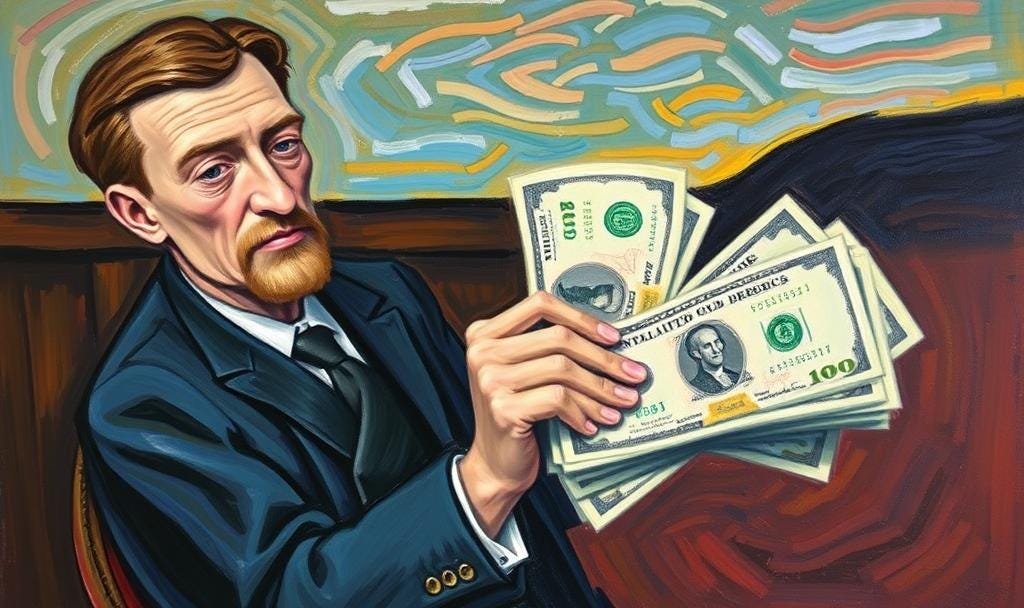The Fed Should Ignore Tariff-Induced Inflation
Sometimes, doing nothing is the most disciplined and effective response of all.
As the Federal Reserve held its benchmark rate steady at 4.25–4.50% for the fifth consecutive FOMC meeting, inflation remains stubbornly above the Fed’s 2% target. According to the most recent data, year-over-year PCE inflation is running at 2.6%, with core PCE (which excludes food and energy) at 2.8%.
With new tariffs now taking effect on a variety of imported goods and critical inputs, the worry is that these policies could push inflation even higher.
Early signs suggest tariffs are beginning to filter through to consumer prices. Items that are commonly imported—like household goods, furniture and electronics—are seeing above-average price increases. But so far, these remain isolated price movements, not broad-based inflation.
Still, some policymakers have floated preemptive rate hikes in response to tariff-driven price pressures. St. Louis Fed President Alberto Musalem recently warned that tariffs could add as much as 1.2 percentage points to inflation and argued that the Fed should “lean against” persistent tariff-driven inflation.
This reaction misunderstands what tariffs do and, more fundamentally, what causes inflation in the first place.
Inflation Isn’t Just Higher Prices, It’s Rising Prices Everywhere
Inflation isn’t about some prices going up. It’s an increase in the average price level leading to an erosion of the purchasing power of money. This happens not because tariffs raise the cost of a few items, but because too much money is chasing too few goods.
To make this more intuitive, let’s go grocery shopping.
Analogy: Grocery Shopping on a Fixed Budget
Imagine you walk into a grocery store every week with exactly $100. You must buy coffee. That is nonnegotiable. Everything else is discretionary.
One week, due to an import tariff, the price of coffee jumps from $10 to $12. You still only have $100 to spend, so something has to give. Maybe you forgo the fancy cheese, opt for store-brand cereal, or buy less fresh Atlantic salmon.
Now imagine everyone in the economy making similar adjustments in response to higher prices for tariffed goods. What happens?
Spending shifts. Demand for non-tariffed goods falls. And so does their price.
In this example, you’re spending $2 more on coffee and $2 less on everything else. The total amount of money in the store hasn’t changed, just which items shoppers are buying. So while some prices rise (like tariffed goods), others fall. On average, however, the price level stays the same.
This isn’t inflation. It’s a change in relative prices, driven by a change in behavior. Consumers reallocate spending. Producers adapt. Labor shifts away from fancy cheese and toward store-brand cereal. The market rebalances.
It’s a messy, sometimes painful process. But it’s not inflation.
Now let’s tweak the example.
This time, when you walk into the grocery store, someone hands you an extra $10 to “help” offset the higher coffee price. You now have $110 to spend instead of $100. So you buy the coffee and the fancy cheese, and the full portion of fresh Atlantic salmon.
And so does everyone else.
Now demand rises throughout the store. And prices follow. This is inflation. But it was not caused by coffee getting more expensive because of tariffs. It was caused by an increase in the amount of money everyone suddenly had to spend.
As Milton Friedman put it:
“Inflation is always and everywhere a monetary phenomenon.”
Tariffs can cause a one-time bump in certain prices. A necessary condition for broad-based inflation, the kind that shrinks real incomes and requires central bank action, is an increase in the supply of money relative to the economy’s output. Tariffs don’t do that.
What the Fed Should and Shouldn’t Do
This distinction matters. If the Fed raises rates in response to a temporary increase in prices of tariffed goods, it risks choking off growth in completely unrelated sectors.
Higher interest rates won’t make imports cheaper or reverse tariff policy—they just dampen borrowing and consumption across the board.
But here’s the kicker: some policymakers are suggesting the opposite response. Governor Christopher Waller, for example, dissented at the most recent FOMC meeting in favor of a rate cut, arguing that tariff-related inflation is likely to be transitory and that delaying cuts could lead to unnecessary labor market weakness.
Waller is right to emphasize that tariffs don’t drive long-run inflation. But I disagree with his conclusion that the Fed should ease policy.
Cutting rates while tariffs are pushing up prices of imported goods risks converting a relative price shock into actual inflation.
Yes, tariffs may be misguided. Yes, they may cause economic distortions. Yes, some sectors of the economy might shrink while others expand. But monetary policy cannot and should not be used to “compensate” for them, either by tightening or loosening.
The Real Risk: Overreaction
The Fed has a track record of being late to the party. Recall their sluggish response to inflation in 2022? So I get the desire to act early.
But do we really want the Fed to be cutting rates at a time when (1) real GDP is growing, (2) unemployment sits at 4.2%, and (3) inflation remains stubbornly above 2%?
I think the bigger danger at this point isn’t doing too little, it’s doing too much. Overcorrecting could either slow growth without addressing the source of actual price pressures (if rates rise), or stoke real inflation (if rates fall).
Bottom Line
Tariffs don’t cause inflation, excess money does.
The Fed shouldn’t fight a relative price shift with blanket interest rate changes. Nor should it try to “soften the blow” of tariffs with easy money.
Sometimes, doing nothing is the most disciplined and effective response of all.


